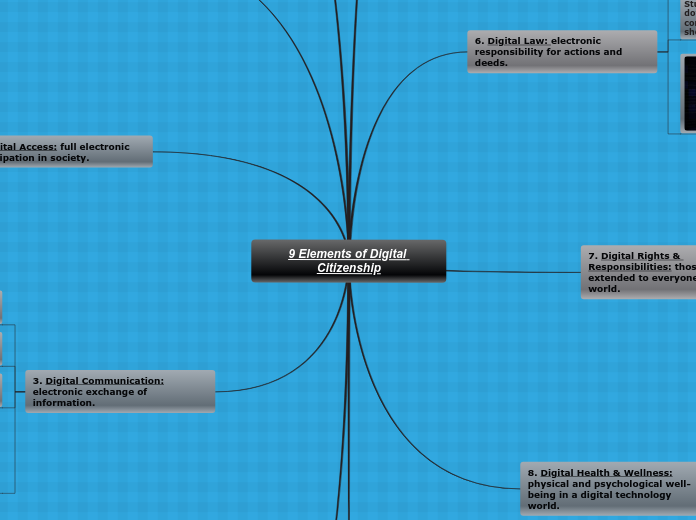9 Elements of Digital Citizenship
5. Digital Etiquette: electronic standards of conduct or procedure.
The standards of conduct expected by other digital technology users
When communication, users learn the rules before becoming involved or using technology
6. Digital Law: electronic responsibility for actions and deeds.
The legal rights and restrictions governing technology use
Students understand what can be downloaded for free and what is considered copyrighted material and should be paid for
7. Digital Rights & Responsibilities: those freedoms extended to everyone in a digital world.
Students cite websites or other digital media sources when using information for class projects
The privileges and freedoms extended to all digital technology users, and the behavioral expectations that come with them
8. Digital Health & Wellness: physical and psychological well-being in a digital technology world.
The elements of physical and psychological well-being related to digital technology use
students learn about health and wellness that relates to technology
9. Digital Security (self-protection): electronic precautions to guarantee safety.
The pecautions that all technology users must take to guarantee their personal safety and the security of their network
Students are aware of the dangers of providing information to anyone over the internet. Make sure virus protection and firewalls are properly updated and configured to protect personal information
1. Digital Commerce: electronic buying and selling of goods.
The buying and selling of goods online
Studensts are informed consumers so that they can safely purchase items online
2. Digital Access: full electronic participation in society.
Full electronic participation in society
Technology opportunites for all students within schools
3. Digital Communication: electronic exchange of information.
The electronic exchange of information
topic
When communication, users learn the rules before becoming involved or using technology
Students communicate without checking out the rules or using technology
4. Digital Literacy: process of teaching and learning about technology and the use of technology.
The capability to use digital technolgy and knowing when and how to use it
Students use digital technologies in new ways
